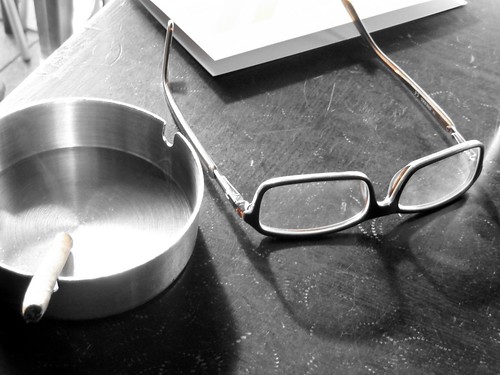Prejudiciële vragen HvJ EU zaak C-056/13 (Érsekcsanádi Mezőgazdasági)
 Dierziektes (vogelgriep); handvest grondrechten (vrijheid ondernemerschap); EVRM (eigendomsrecht)
Dierziektes (vogelgriep); handvest grondrechten (vrijheid ondernemerschap); EVRM (eigendomsrecht)
Onderwerp: Handvest grondrechten artikel 16 (vrijheid ondernemerschap); EVRM artikel 1 aanv protocol (eigendomsrecht); Richtlijn 2005/94/EG van de Raad van 20 december 2005 betreffende communautaire maatregelen ter bestrijding van aviaire influenza en tot intrekking van richtlijn 92/40/EEG (van de Raad van 19 mei 1992 tot vaststelling van communautaire maatregelen voor de bestrijding van aviaire influenza)
Verzoekster heeft een veeteeltbedrijf met onder meer een kalkoenvetmesterij. Zij sluit een huurovereenkomst voor de periode 06 februari – 31 december 2006 met een landbouwcoöperatie voor een boerderij die zij wil gebruiken als onderkomen voor door haar gekweekte kalkoenen. Kort na de start wordt een dode zwaan gevonden die is besmet met het vogelgriepvirus H5N1. De Europese Commissie kondigt direct maatregelen aan; zo wordt een beschermingsgebied ingesteld en transport van pluimvee verboden. Verzoekster krijgt dan ook geen toestemming haar kalkoenen naar de net gehuurde boerderij over te brengen. Omdat tegen die beslissing geen beroep mogelijk is start verzoekster een schadevergoedingsprocedure. Zij ontvangt een bedrag maar dat omvat niet de gederfde winst. Voor het overige wordt haar vordering afgewezen. Zij is het daar niet mee eens en start een schadevergoedingsprocedure tegen de betreffende overheidsinstantie. Zij meent dat verweerster het kalkoentransport niet had mogen verbieden en dat zij daarmee Europese regelgeving heeft geschonden. Verweerster meent geen misbruik te hebben gemaakt van haar discretionaire bevoegdheid en stelt dat schadevordering niet kan worden toegewezen als niet aan de aansprakelijkheidsvoorwaarden (zoals vastgelegd in het Hongaarse BW) is voldaan.
De verwijzende rechter vraagt zich af of het een terechte beslissing was dat verzoekster niet in beroep kon tegen de haar treffende maatregel. Daarnaast of er sprake is van een evenredige maatregel, een gegrond verzoek voor schadevergoeding, en mogelijke schending van grondrechten als de vrijheid van ondernemerschap (handvest) of het eigendomsrecht (EVRM).
Daarnaast stelt de verwijzende rechter vragen in verband met een lopende (precontentieuze) ingebrekestellingsprocedure wegens onvolledige implementatie (met name de bepalingen over schadevergoeding) van RL 2005/94/EG. Hij vraagt zich af welke rol de Commissie in het kader van de samenwerking met de nationale rechterlijke instanties (artikel 15, lid 1, van verordening (EG) nr. 1/2003 in dit opzicht zou kunnen vervullen om de negatieve gevolgen die de genomen maatregelen ter beteugeling van deze dierziekte voor de werking van de interne markt te beperken.
De verwijzende Hongaarse rechter stelt het Hof de volgende vragen
1. Was de door de Hongaarse administratieve autoriteiten in het kader van de tijdelijke beschermende maatregelen tegen hoogpathogene aviaire influenza genomen beslissing tot vaststelling van een beschermingsgebied waarin onder meer pluimveetransport werd verboden, verenigbaar met het Unierecht, met name richtlijnen 92/40/EEG en 2005/94/EG van de Raad en beschikking 2006/105/EG van de Commissie?
Was de door de Hongaarse administratieve autoriteiten in het kader van de tijdelijke beschermende maatregelen tegen hoogpathogene aviaire influenza genomen beslissing tot gedeeltelijke wijziging van de bepalingen inzake het beschermingsgebied en tot vaststelling in dat verband van een verbod in dat gebied op onder meer de doorvoer van pluimvee, alsook de maatregel die de bevoegde autoriteit ten aanzien van verzoekster heeft vastgesteld bij een (niet voor hoger beroep vatbare) beslissing houdende het verbod om kalkoenen (voor fokkerijdoeleinden) naar een in het beschermingsgebied, in de onmiddellijke nabijheid van de gedetecteerde infectiehaard gelegen boerderij te transporteren, verenigbaar met het Unierecht, met name richtlijnen 92/40/EEG en 2005/94/EG van de Raad en beschikking 2006/105/EG van de Commissie?
2. Werd met richtlijnen 92/40/EEG en 2005/94/EG van de Raad, als bronnen van Unierecht, beoogd een Unierechtelijke regeling vast te stellen voor de vergoeding van de schade die particulieren in voorkomend geval lijden ten gevolge van tijdelijke maatregelen die ter bescherming tegen hoogpathogene aviaire influenza in de Unie zijn vastgesteld? Volstaat de in richtlijnen 92/40/EEG en 2005/94/EG van de Raad en beschikkingen 2006/105/EG en 2006/115/EG van de Commissie aangeduide Unierechtelijke rechtsgrondslag om een Unierechtelijke regeling vast te stellen voor de vergoeding van de schade die particulieren in voorkomend geval lijden ten gevolge van tijdelijke beschermingsmaatregelen tegen hoogpathogene aviaire influenza?
3. Indien de tweede vraag bevestigend wordt beantwoord: is de beperking van het recht op vergoeding van schade die voortvloeit uit nationale tijdelijke maatregelen die ter uitvoering van genoemde rechtsbronnen zijn vastgesteld rechtmatig en verenigbaar met het Unierecht? Kan een nationale bepaling die de door de staat verschuldigde schadevergoeding beperkt tot de daadwerkelijk geleden schade en gedane uitgaven en de vergoeding van gederfde winst uitsluit, als een noodzakelijke en evenredige beperking van het recht op vergoeding van de aan particulieren veroorzaakte schade worden aangemerkt?
4. Indien de tweede vraag ontkennend wordt beantwoord: kan verzoekster haar recht op vergoeding van de gederfde winst rechtstreeks baseren op schending van het Handvest van de grondrechten van de Europese Unie (artikel 16, inzake de vrijheid van ondernemerschap; artikel 17, inzake het recht op eigendom, en artikel 47, inzake het recht op een doeltreffende voorziening in rechte), indien zij schade heeft geleden door de tijdelijke maatregelen die de lidstaat ter uitvoering van het Unierecht inzake de bescherming tegen hoogpathogene aviaire influenza heeft vastgesteld, maar het nationale recht de aanspraak op een dergelijke schadevergoeding beperkt door elke mogelijkheid om vergoeding van de gederfde winst te vorderen, uit te sluiten?
5. Indien op basis van enigerlei Unierechtelijke grondslag aanspraak kan worden gemaakt op integrale schadevergoeding: kan een dergelijk recht dan uitsluitend ten aanzien van de betrokken staat geldend worden gemaakt of kan het middels een ruime uitlegging van het begrip „staat” ook ten aanzien van de overheidsadministratie geldend worden gemaakt in een procedure tot vergoeding van de in de uitoefening van de overheidstaken veroorzaakte schade? Indien een dergelijk recht ook ten aanzien van de overheidsorganen geldend kan worden gemaakt: kan het nationaal recht inzake schadevorderingen dan aanvullende voorwaarden stellen aan het recht op schadevergoeding?
6. Gesteld dat het Unierecht de verzoekende partij niet de mogelijkheid biedt om rechtstreeks op basis van het Unierecht een integrale vergoeding van de haar berokkende schade te verkrijgen, moeten overeenkomstig het vereiste van processuele gelijkheid dan dezelfde regels worden toegepast wanneer uitspraak wordt gedaan over vorderingen die overeenkomstig het Unierecht moeten worden beoordeeld en over soortgelijke vorderingen die overeenkomstig het Hongaarse recht moeten worden beoordeeld?
7. Is het in feitelijke omstandigheden als die van het hoofdgeding – gelet op het feit dat de wettelijke en bestuursrechtelijke maatregelen die de lidstaten in het kader van de bescherming tegen hoogpathogene aviaire influenza bij wilde vogels in de Unie hebben vastgesteld noodzakelijkerwijs de werking van de interne markt aantasten – mogelijk om in een gerechtelijke procedure in verband met maatregelen ter uitvoering van het Unierecht de Europese Commissie te verzoeken om een advies als amicus curiae, met name wanneer blijkt dat de Europese Commissie tegen de betrokken lidstaat een niet-nakomingsprocedure heeft ingeleid die verband houdt met rechtsvragen die relevant zijn voor het betrokken geval?
8. Zo de Europese Commissie kan worden verzocht om een advies als amicus curiae of om een gewone inlichting, is zij dan verplicht om het advies als amicus curiae uit te brengen of de gevraagde inlichtingen over de in het kader van de niet-nakomingsprocedure verkregen gegevens, documenten of verklaringen en de door haar ter zake gevolgde handelwijze te verstrekken, in het bijzonder wanneer het gaat om niet-publieke gegevens die in aan de niet-nakomingsprocedure bij het Hof van Justitie voorafgaande fasen zijn verkregen? Kunnen dergelijke gegevens in een individueel geschil voor een nationale rechter publiekelijk worden gebruikt?
 Een bijdrage van Edmon Oude Elferink en Evi Mattioli, CMS EU Law Office, Brussel.
Een bijdrage van Edmon Oude Elferink en Evi Mattioli, CMS EU Law Office, Brussel.
 Uit't
Uit't  Aanbestedingsrecht. Mededinging. Non-profit voorrang en ziekenvervoer.
Aanbestedingsrecht. Mededinging. Non-profit voorrang en ziekenvervoer.
 Mededingingsrecht. NPM Healthcare B.V is voornemens zeggenschap te verkrijgen over Kliniek Ortho-Fit B.V, Stichting Orthopedium en Stichting Orthopedie Rijnmond. De activiteiten van de bij de concentratie betrokken ondernemingen overlappen op het gebied van klinische en niet-klinische orthopedie. De Raad van Bestuur van de Nederlandse Mededingingsautoriteit deelt mede dat voor het tot stand brengen van de concentratie waarop de melding betrekking heeft geen vergunning is vereist.
Mededingingsrecht. NPM Healthcare B.V is voornemens zeggenschap te verkrijgen over Kliniek Ortho-Fit B.V, Stichting Orthopedium en Stichting Orthopedie Rijnmond. De activiteiten van de bij de concentratie betrokken ondernemingen overlappen op het gebied van klinische en niet-klinische orthopedie. De Raad van Bestuur van de Nederlandse Mededingingsautoriteit deelt mede dat voor het tot stand brengen van de concentratie waarop de melding betrekking heeft geen vergunning is vereist.


 Mededingingsrecht. Octrooirecht. ABC.
Mededingingsrecht. Octrooirecht. ABC. Op 2 november 2012 heeft de Raad van Bestuur van de Nederlandse Mededingingsautoriteit, mede gelet op de door partijen gedane prijstoezegging, besloten dat voor het tot stand brengen van de hierboven genoemde concentratie een vergunning wordt verleend. Eindmededeling in
Op 2 november 2012 heeft de Raad van Bestuur van de Nederlandse Mededingingsautoriteit, mede gelet op de door partijen gedane prijstoezegging, besloten dat voor het tot stand brengen van de hierboven genoemde concentratie een vergunning wordt verleend. Eindmededeling in 














